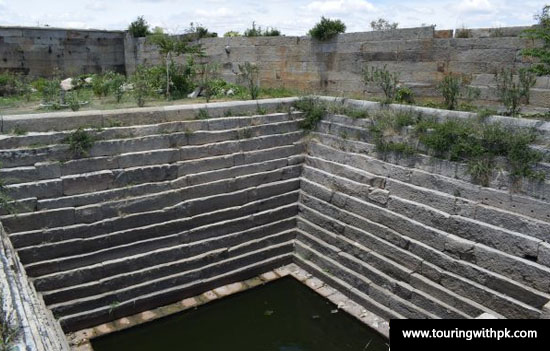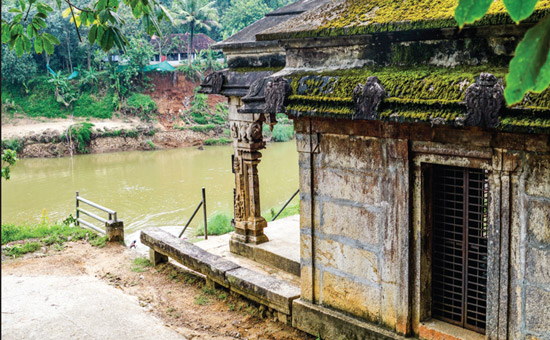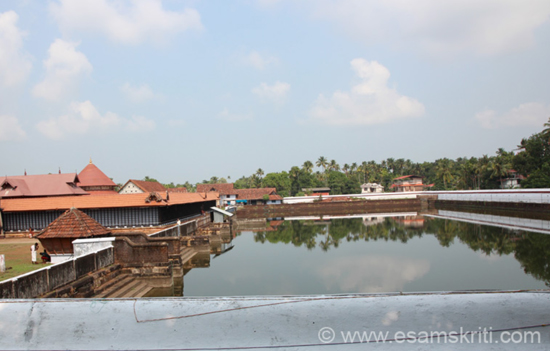- Know the benefits of temple ponds and
their historical/cultural significance. What are problems faced by them and why
their preservation is important.
Kerala, referred to as ‘God’s Own Country’, is known for its lush green landscapes, water bodies, and rich cultural heritage. Among its many cultural and architectural marvels, the temple ponds or ambalakulams, hold a special place. These serene water bodies are an integral part of Kerala’s temple complexes, playing a significant role in the spiritual and social lives of the local communities.
This
article was first published in the Bhavan Journal.
Historical and Cultural
Significance
The concept of temple ponds in Kerala
dates back centuries. Ambalakulams were not merely water reservoirs but served
multiple purposes, both sacred and utilitarian. They were a key component of
the temple architecture, often located adjacent to the main shrine.
Benefits of Temple Ponds
These ponds were used for ritualistic
purposes such as ablutions before entering the temple, immersion of idols
during festivals, and other religious ceremonies. The ponds also served as a
community gathering space. In an era when water was a precious commodity, ambalakulams acted as the primary source
of water for daily needs, chiefly, bathing. They also provided a habitat for a
variety of flora and fauna, thereby contributing to the local biodiversity.
Ecological Importance
Beyond their spiritual and social
significance, ambalakulams played a
critical role in maintaining the ecological balance of the region. These ponds
acted as natural rainwater harvesting systems, helping to recharge groundwater
levels. The trees and vegetation surrounding the ponds contributed to a
microclimate that helped to cool the surroundings. They also supported a
variety of aquatic plants and animals, which were an essential part of the
local ecosystem.
With increasing urbanisation and the
construction boom, many ambalakulams
have been encroached upon or filled up to make way for buildings, roads, and
other infrastructure. As villages, towns, and cities expand, there is a growing
demand for land, and temple ponds are often seen as prime real estate.
Another factor is neglect and the lack
of maintenance. In the past, temple ponds were
well-maintained by the local community and temple authorities. However,
with the changing lifestyle and priorities, this community responsibility has
diminished.
 Virupaksha Mandir Mulbagal, Karnataka.
Virupaksha Mandir Mulbagal, Karnataka.
Pollution is
another significant issue. Many of the remaining ambalakulams are plagued by garbage dumping, sewage inflow, and other pollutants, making the water unfit for use. Over time, this has led to the deterioration of the pond’s ecosystem, turning these once-pristine water bodies into stagnant, polluted pools.
 The banks of
the River Kallada at Mannadi Palayakavu has eroded from storms, and the
mandapam on its banks is deteriorating.
The banks of
the River Kallada at Mannadi Palayakavu has eroded from storms, and the
mandapam on its banks is deteriorating.
This loss of temple ponds has led to a
decrease in groundwater levels and increased
flooding during the monsoon seasons. The destruction of these water
bodies also results in the loss of biodiversity, impacting the flora and fauna
that depend on these ecosystems for survival.
The Need for Preservation
The preservation of ambalakulams is crucial not just for cultural and religious reasons but also for ecological sustainability. These ponds are a part of Kerala’s heritage, and their disappearance represents a loss of the state’s historical and cultural identity. The government, local communities, and temple authorities must take active steps to protect and rejuvenate these ponds.
One of the ways to achieve this is
through awareness campaigns highlighting the importance of ambalakulams. Educating
the public about the cultural, historical, and ecological significance of these
ponds can help garner community support for their preservation. Temple
authorities should also be encouraged to take up the responsibility of
maintaining these ponds, with support from the government and non-governmental
organisations.
Legal measures should be implemented to
protect these water bodies from encroachment and pollution. The government can
introduce stringent laws to prevent the illegal filling of ponds and enforce
penalties for those who violate these regulations. Moreover, initiatives can be
launched to clean and restore polluted ponds, turning them back into thriving
ecosystems.
The ambalakulams of Kerala are more than just ponds; they are a vital part of the state’s cultural and ecological fabric. It is imperative to recognise their importance and
make concerted efforts to protect and rejuvenate them. By preserving these
ancient water bodies, Kerala can ensure that its cultural legacy and natural
environment continue to thrive for future generations.
 Pond survived, Sree Bharata Temple near Thrissur.
Pond survived, Sree Bharata Temple near Thrissur.
This article was first published in the Bhavan’s Journal, October 16, 2024 issue. This article is courtesy and copyright Bhavan’s Journal, Bharatiya Vidya Bhavan, Mumbai-400007. eSamskriti has obtained permission from Bhavan’s Journal to share. Do subscribe to the Bhavan’s Journal – it is very good.
Also
read
1. Sacred
Coves of Kerala
2. Step-wells
of Maharashtra
3. Water
from a step-well in Orchha used for irrigation
4. Why
do Temples have step-wells and tanks